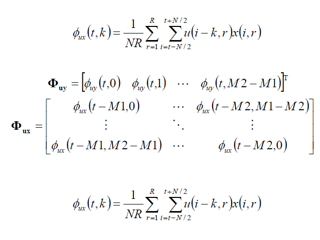Research Interests
The broad objective of my research is to investigate how disease and injury affect the neuromechanics of locomotion and how altered lower-limb neuromechanics can lead to injury and disease. The mechanical properties of our limbs both enable and constrain our ability to interact with the surrounding world. These properties are especially important in our lower-extremities, through which interaction with the environment facilitates essential mobility tasks, such as quietly standing, walking, jumping, or running. Lower-limb mechanics are especially crucial for normal human locomotion. The mechanics of our legs contribute to our ability to stand upright, despite the inherent instability of upright stance. These mechanics will influence our ability to respond to uncertainties in the ground, whether it is a varying terrain, an unexpected obstacle, or a misplaced step. They will also play a large role in energy storage and loss, and thus must be finely tuned to achieve optimal walking efficiency. Finally, they will influence the magnitudes and distribution of loads across all the different joints from the trunk down to the feet. Though substantial previous research has been conducted to gain a better understanding of the mechanics of locomotion, much remains unknown about how humans control the mechanics of their legs during locomotion. It is crucial to understand the exact role mechanics have in the control of human locomotion, so as to effectively treat diseases that cause alterations in lower-limb mechanics, to prevent disease and injury that arise from improper mechanics, and to design prostheses and exoskeleton that reproduce the functionality of the limbs they enhance and replace.

Muscuolosketal Injuries and Diseases
Alterations in limb mechanics may be the cause of or the effect of numerous orthopaedic and musculoskeletal diseases. For example, low-back pain and knee osteoarthritis, two of the most prevalent orthopaedic and musculoskeletal diseases are associated with alterations in lower-limb and trunk mechanics respectively. Ankle sprains, the most common musculoskeletal injury is known to alter ankle mechanics leading to long-term impairments in up to 40% of sprain sufferers. A greater understanding of the role mechanics play in these diseases and injuries will allow for more effective prevention and treatment.

Regulation of Limb Mechanics
Leveraging limb and joint mechanics may be a simple, efficient and consistent mechanism to control movement. For example, hopping could be perfomed by setting the mechanics of the leg to act like a spring, whereas smooth landing could be performed by setting the mechanics of the leg to act like a damper. However, it has never been demonstrated that people do leverage the mechanical properties of their limbs and joints in such a manner. If modulating limb and joint mechanics is a method that people use to complete these tasks, this may have important ramifications on the design of prostheses and exoskeletons, as biomimetic impedances are often programmed into these devices.

Algorithms to Model Human Physiology
To investigate the human limb and joint mechanics, I use a combination of system identification, mixed-effects modeling and dynamic numerical simulations. I have developed numerous system identificaion algorithms to quantify human limb mechanics. More recently, I have began to work with and develop mixed-effects models to qunatify various aspects of human physiology.